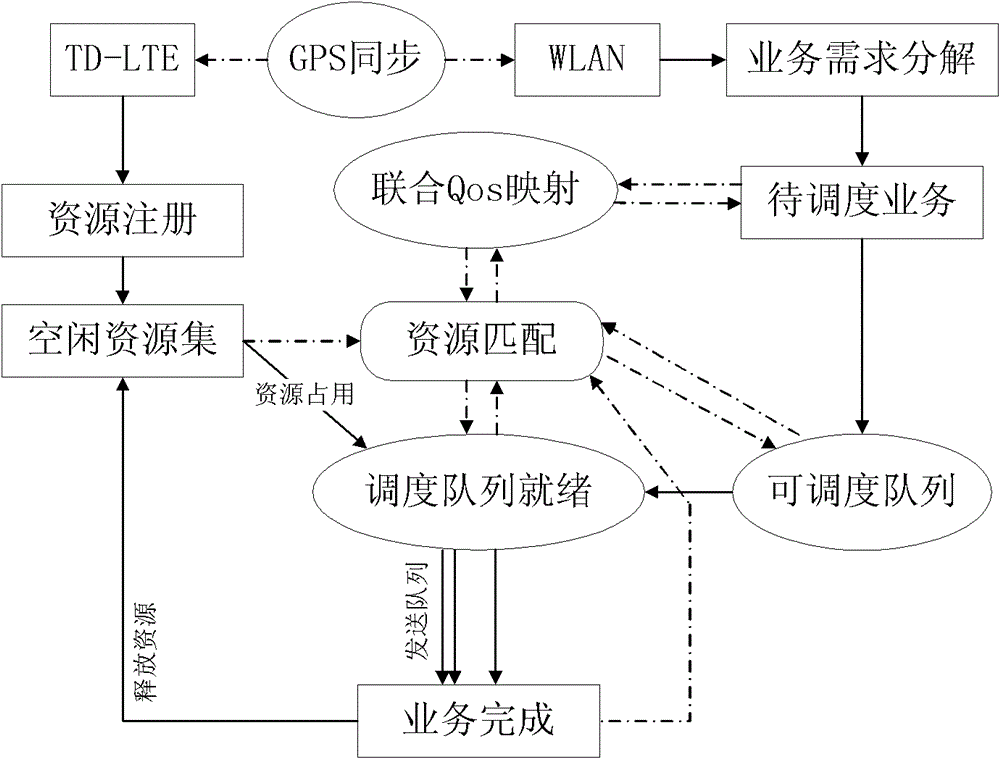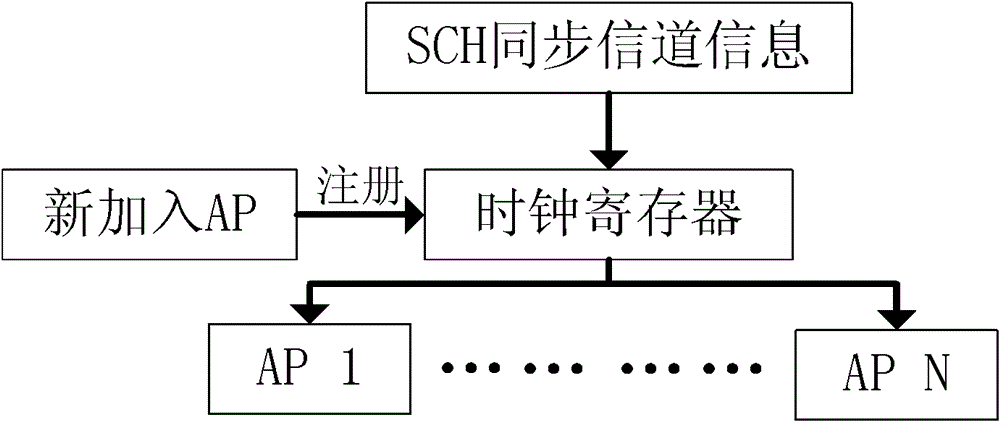A Delay Controllable Joint Radio Resource Scheduling Method
A wireless resource scheduling and delay technology, applied in wireless communication, electrical components, etc., can solve the problems of unclear market, slow R&D process, unclear integration goals, etc., to ensure QoS requirements, meet the needs of delay, increase The effect of using efficiency
- Summary
- Abstract
- Description
- Claims
- Application Information
AI Technical Summary
Problems solved by technology
Method used
Image
Examples
Embodiment 1
[0044] This embodiment provides a joint radio resource scheduling method with controllable delay, such as figure 1 shown, including the following steps:
[0045] 1. Use an additional clock register to regularly read the TD-LTE system clock, and notify the WLAN network through the clock register, so that the WLAN network and the TD-LTE network can be synchronized.
[0046] TD-LTE is a time-division duplex LTE technology. All wireless channels correspond to unique resources in the time domain, while WLAN uses carrier sense multiple access / collision avoidance CSMA / CA (Carrier Sense Multiple Access with Collision Avoidance). It is a preemptive half-duplex media access control protocol, which is essentially a TDD-based duplex mode.
[0047] In IEEE 802.11, a timing synchronization function TSF (Timing Synchronization Function, Timing Synchronization Function) is proposed to realize the timing synchronization method of Ad hoc (point-to-point) network. Scalability of hoc network. ...
Embodiment 2
[0061] The applicable scenario considered by the present invention is in the concentrated areas of remote areas or in the carriages of high-speed railways in the future. Since optical cables cannot be laid, the wireless relay method can more conveniently realize user networking. The following uses high-speed railways as an example to consider the heterogeneous The network type is 802.11e and TD-LTE.
[0062]When users surf the Internet, a large amount of data services will be generated, and the types of services generated are also various. According to the 802.11e protocol, there are 4 types of service levels, which are 2 types of background services, 1 type of video services and 1 type of voice services; the corresponding Qos levels increase from 0 to 3 in turn. It can be seen from relevant literature and test reports that when the number of users exceeds 20, the collision probability will be greatly increased, and the average delay caused by collisions can reach more than 20...
PUM
 Login to View More
Login to View More Abstract
Description
Claims
Application Information
 Login to View More
Login to View More - R&D
- Intellectual Property
- Life Sciences
- Materials
- Tech Scout
- Unparalleled Data Quality
- Higher Quality Content
- 60% Fewer Hallucinations
Browse by: Latest US Patents, China's latest patents, Technical Efficacy Thesaurus, Application Domain, Technology Topic, Popular Technical Reports.
© 2025 PatSnap. All rights reserved.Legal|Privacy policy|Modern Slavery Act Transparency Statement|Sitemap|About US| Contact US: help@patsnap.com



